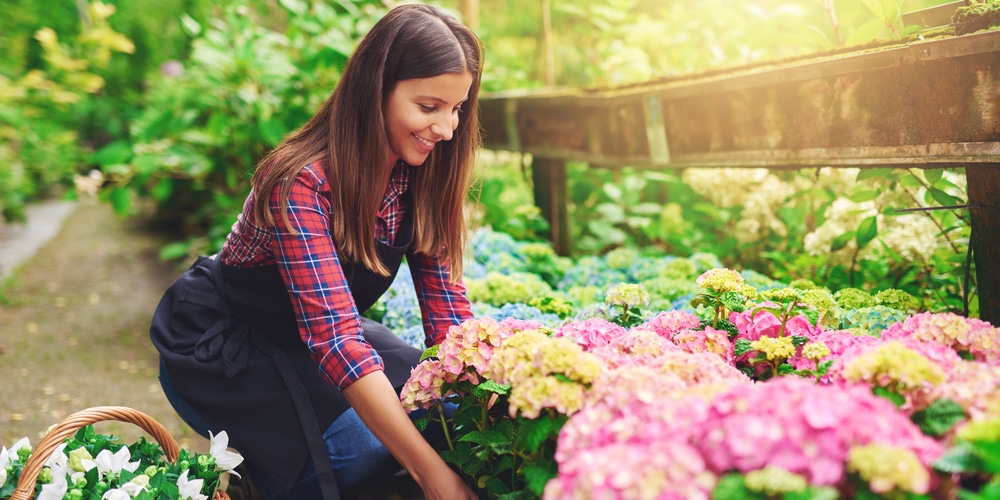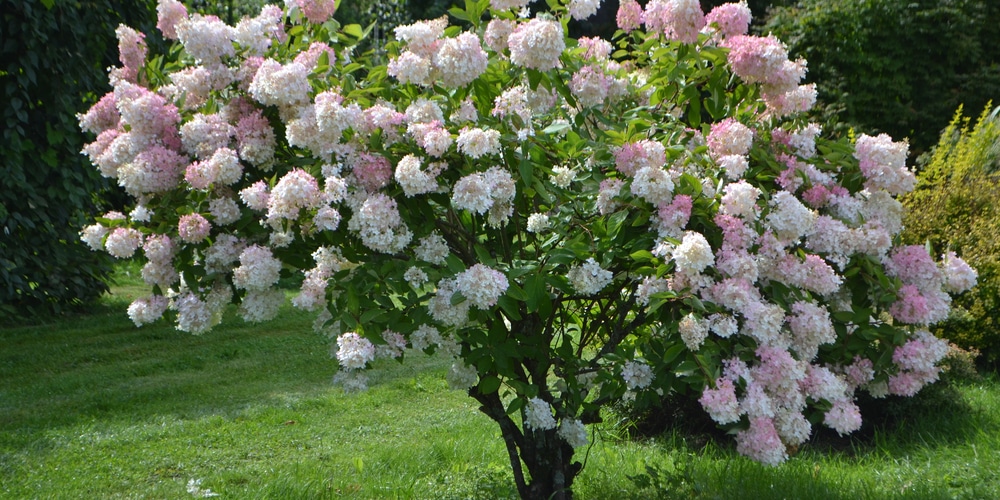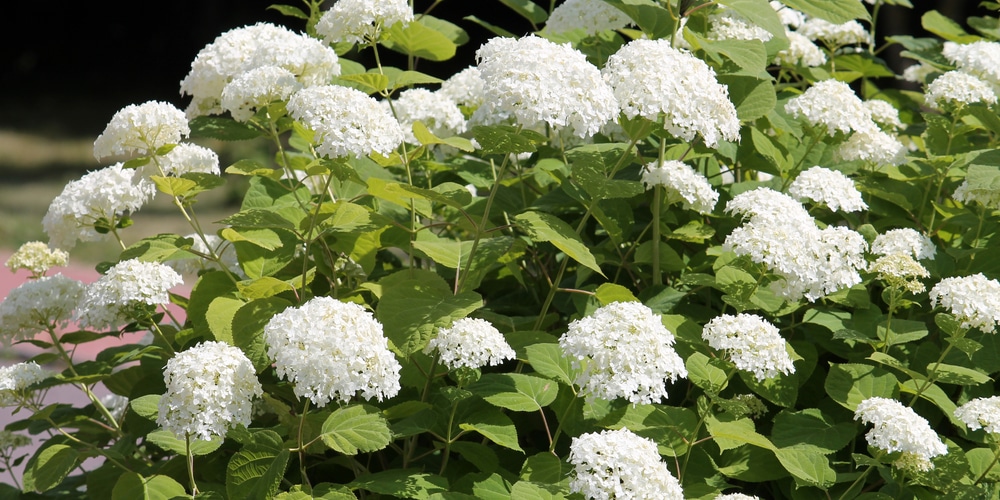Hydrangea macropylla—AKA Japanese, French, or Snowball hydrangea–is one of the most successful hydrangeas you can cultivate in Zone 10. Generally, this plant requires slightly acid soil, but for blue and pink hydrangeas, you can achieve different colors of the flowers if you change the soil’s pH. Let’s look at growing hydrangea in zone 10.
What you need to know About Hydrangeas

Hydrangeas are perennial shrubs that can reach heights from one to three feet. The leaves and flowers of the hydrangea are simple, and the plant seems to cope with close-to-the-century-mark temperatures as long as it receives frequent watering. Hydrangeas have fragrant flowers that bloom in spring, summer, and fall, depending on your planting zone’s type and cultivar. This shrub may stop flowering in the summer heat in hot climates but then rebloom in the fall.
Hydrangeas are generally easy to grow. However, they require proper care during their growing period. They need well-drained soil with high levels of organic matter. They also need full sun exposure in the morning and afternoon shade, but many thrive and bloom in partial shade. They also prefer a cozy environment that you can achieve by mulching it with leaves or bark to retain heat in the winter months or placing it near a sunny window during the summer months.
How to Plant Hydrangeas
Plant your hydrangea in the fall or by early spring for the best results. That will give the plant enough time to establish a strong root system before blooming.
Typically, plant hydrangeas in a deep hole. Dig a hole that is twice as large as the root ball of the plant and 2 to 3 times as wide. Then cover it with soil and water it well to settle the soil around your plant’s roots. Reaching a maximum of 15 feet in height, the hydrangea plant grows quickly and fills in the space in just one summer.
You can grow hydrangeas in a flower bed or make a simple container by filling it with soil then planting your hydrangea. Then you will need to water the plant regularly and fertilize accordingly.
How to Change the Color of Hydrangea Flowers
The pH of the soil is the most crucial factor in changing the color of hydrangea flowers. Hydrangea can change its color from blue to pink and from pink to blue, depending on the soil’s pH level. If you live in an area that does not have a high level of acidity, you can alter your soil’s pH level and consequently help change the color of your hydrangea flowers.
Hydrangea Care and Maintenance zone 10
In order to keep your hydrangea healthy, you have to give it the right care and maintenance. The most important thing is to mulch around them and keep the soil moist.
Soil Requirement
You can plant hydrangeas in any soil, but be sure it’s well-drained soil and high in organic matter.
Sunlight
Hydrangeas require full sun exposure in the morning and some afternoon shade.
Watering
Hydrangeas prefer moist soil, so it is best to water them often in the spring and summer. However, you should also avoid overwatering hydrangeas because they need a deep root system to establish themselves in their environment.
Fertilizing
Hydrangeas are low-maintenance plants that do not need much fertilization; however, you can fertilize them for best results during the spring and summer months. Use a soluble organic fertilizer in spring or fall when planting hydrangea to maintain healthy growth and blooms throughout the season. You may also want to use an organic fertilizer if your soil is high in nitrogen.
Pruning
Hydrangeas should be pruned to keep the plant manageable and to encourage new growth. You can cut them back by two-thirds at any time of the year and pinch off flower buds to encourage new blooms. If you are pruning hydrangeas, make sure you do not cut into their stems, as it may cause them to die or stop flowering.
Pruning is vital for hydrangeas because it will help them grow healthy. You also want your plant to have plenty of room to bloom so that you receive enough flowers throughout the growing season and an abundance of blooms in the fall.
Pruning hydrangeas should be done immediately after blooming stops in summer, but not later than August. You should also avoid pruning hydrangeas in winter, as it will cause them to die.
Related Article: When to Plant Hydrangea?


